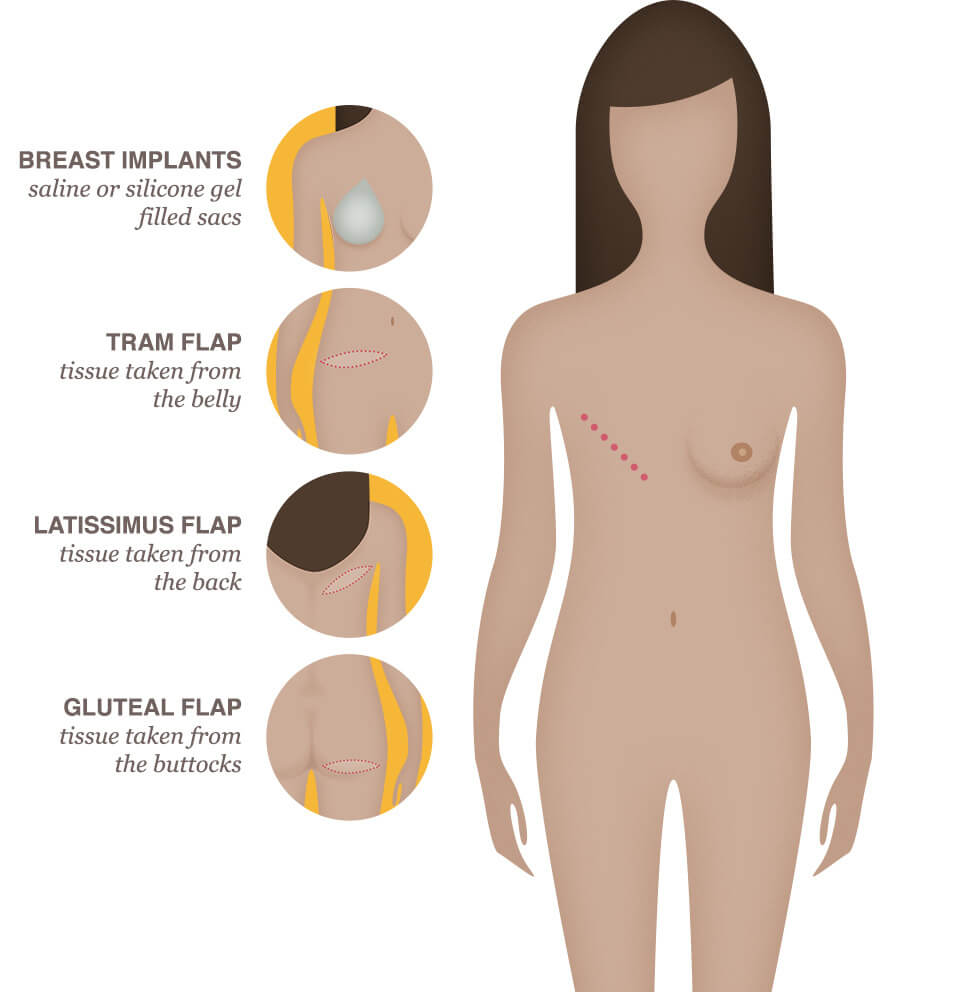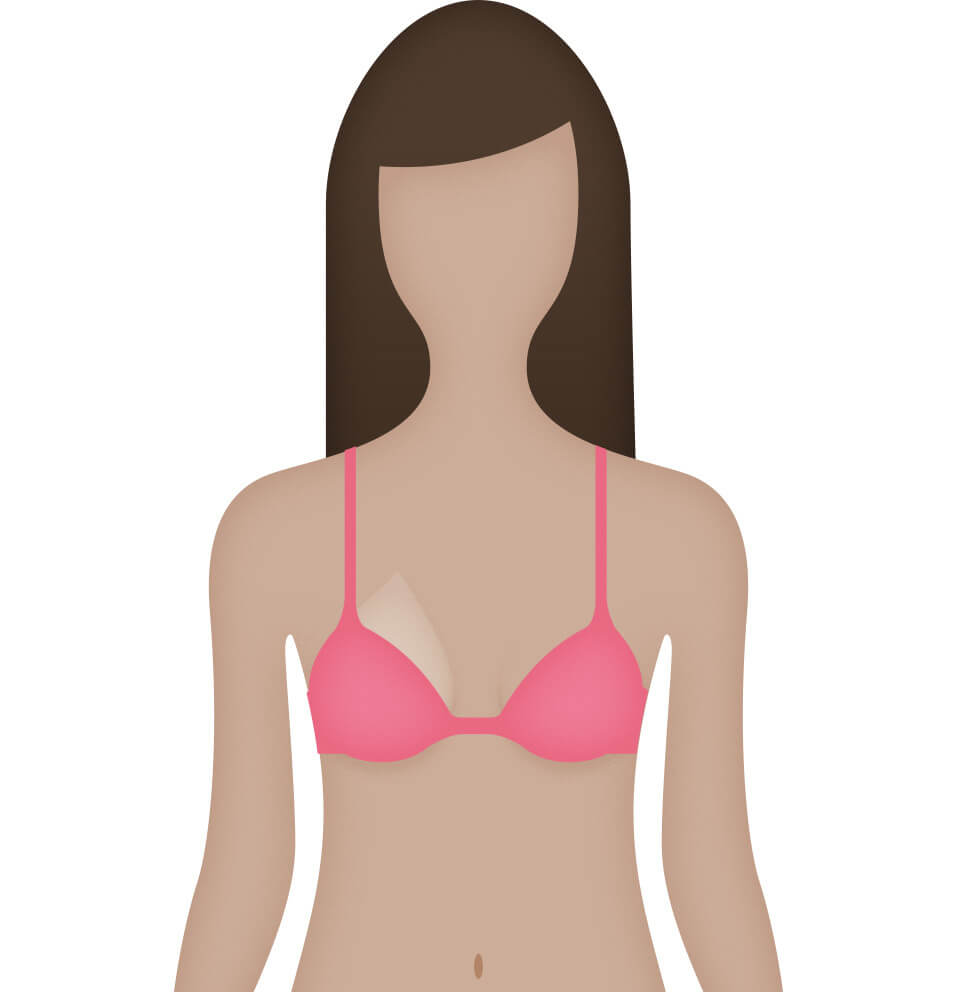Breast Reconstruction
Breast Reconstruction Options

There are a few options for breast reconstruction, and which one you use will depend on your age, body type, and treatment plan.
- Breast Implants: The breasts are filled with sacs of saline or silicone gel, or a combination of both.
- Skin Grafts and Transplant (TRAM Flap, Latissimus Dorsi Flap, Gluteal Flap, or TUG): An alternative solution is to use tissue the surgeon removes from another part of your body. The TRAM flap, which uses tissue and muscle from the belly area, can have lifting restrictions for patients in the future. The Latissimus Dorsi flap takes the muscles from under the shoulder blade. The Gluteal flap takes no muscles, just tissue from the buttocks. A procedure called TUG takes the inner thigh fat and no muscle. Procedures that take no muscle require the expertise of a plastic surgeon who does microvascular surgery.
- DIEP Flap (Deep Inferior Epigastric Perforator Flap): This solution uses the abdominal fat (no muscle) to sculpt the tissue into the shape of your breast, resulting in a full tummy tuck and no lifting restrictions later.
- Additional Cosmetic Details: In addition to reconstructing the breast, the surgeon can add a nipple, change the shape or size of the reconstructed breast, and operate on the opposite breast as well for a better match. Areola and nipple tattooing are also options. The plastic surgeon will be able to discuss with you the benefits and risks of each procedure and help you decide what will make you feel the most natural.
Are There Any Alternatives To Breast Reconstruction Surgery?
One alternative to breast reconstruction is a removable prosthetic breast that is worn in a mastectomy bra equipped with a pocket to keep the prosthesis in place. This will preserve the shape and look of the breast without the surgical procedures. Some women opt for a prosthesis to help balance out their weight and posture, too. Full or partial breast prosthetic forms and mastectomy bras are often times covered by health insurance.
There are also clinical situations in which due to the size of the tumor or other medical diseases and disorders you may not be a candidate for getting reconstruction done at the time of mastectomy.

If you decide not to undergo a breast reconstruction procedure or are not able to, there are still options to improve the appearance of your chest wall.
Aesthetic flat closure is a surgical procedure that removes or rearranges excess breast skin and fat after a mastectomy to produce a smooth, flat chest wall contour. If needed, revision procedures such as fat grafting can further help with creating the best possible outcome.
With aesthetic flat closure, you can choose to have other forms of reconstruction later (as long as you’re medically cleared).
Coping With Change, Making Your Plan
After a mastectomy, you have several choices that can help you become comfortable with the changes in your body. They are all options with benefits to each approach. What is best for you and your body may not be what is best for another woman.
If you think you will opt for a breast reconstruction, you should speak with your medical team before you have the lumpectomy or mastectomy, even if you plan to wait until later to have your breast reconstruction.
Whether you undergo breast reconstruction, wear a prosthetic breast, or choose to simply embrace the changes you have experienced by allowing the breast removal to remain obvious, you should feel free to make whatever decision is right for you. The goal is to prevent the discomfort of unwanted change, while enabling you to accept what has occurred and continue on with your life.

